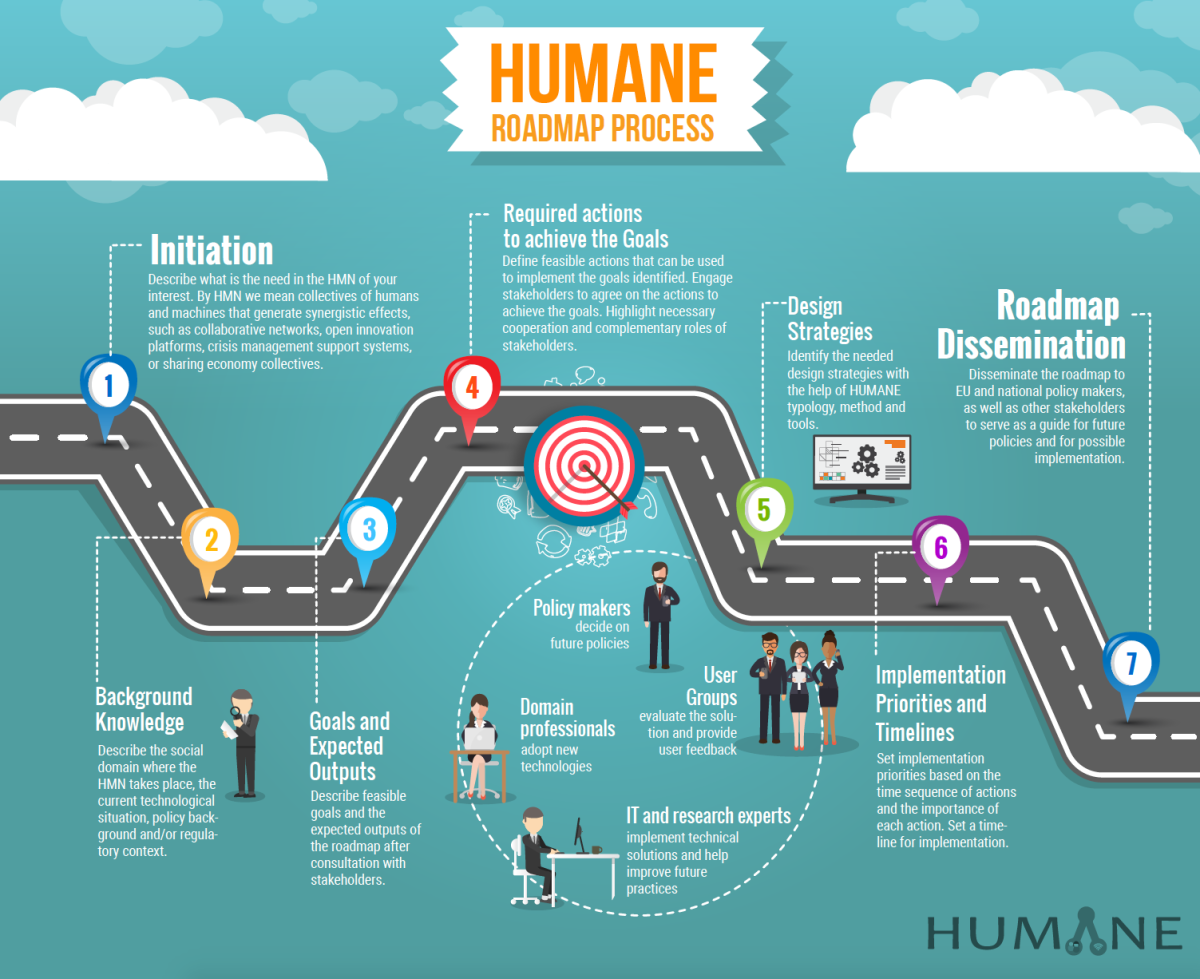In the course of the HUMANE project, we examine a sample of social domains, where human-machine interaction is expected to be significant in the future. We study the type of interactions, the roles of humans and machines, and the challenges that must be addressed to ensure the successful integration of machines in a way that is beneficial for society. We then create a roadmap implementation for each domain that can guide future policies.
We have formalized the HUMANE roadmapping process to be used to construct the roadmap for each social domain where we want to improve Human-Machine Network (HMN) design.
The HUMANE roadmapping process consists of the following steps:
Figure: Illustration of the HUMANE roadmap process
- Initiation: In this first step, we describe what we want to achieve and the need to design or improve the HMN in the social domain of interest. The needs will be further explained by listing the shortcomings of current HMN designs and by discussing the emerging and future trends in the domain of interest.
- Background knowledge: Here we describe the current technological situation, policy background and regulatory context., This background knowledge will help to identify the gaps between the current state of affairs and where we want to arrive at, and will provide a reference framework for the future work and proposed policy actions.
- Goals and expected outcomes: This step is carried out in cooperation with stakeholders with a view on describing the goals that are feasible to implement in a relatively short timeframe, and on describing the actual outputs of the roadmap. An output could be a new regulation or code of practice, a novel service, a report on case studies, etc. Together with the current situation described in step 2, it is used to make a gap analysis between the current and the desired HMNs we want to have in the future.
- Required actions to achieve the goals: This is also a collaborative step with stakeholders. The objective is to describe the stakeholders’ roles, comprising the actions that are necessary to achieve the goals in the previous step. Emphasis is on highlighting the complementary roles of different stakeholders in achieving the goals, and the synergistic effects of their actions.
- Design strategies: This is a crucial step in the HUMANE roadmap process, as it will help to identify the necessary design strategies based on the characteristics of humans and machines in the social domain of interest and will apply the HUMANE topology, method and tools to find appropriate design patterns.
- Implementation priorities and timeline: In the last step of the roadmap construction, implementation priorities for the different tasks will be set, based on the logical sequence of actions, but also the importance of each action. The current level of implementation, as well the complexity of the tasks will be taken into account to set a timeline for implementation. In addition, the output from the gap analysis will help to estimate the investment of time, money and human resources required to achieve the desired outcomes.
- Roadmap dissemination: The HUMANE roadmaps can be disseminated to policy makers, ICT designers, as well as other stakeholders to serve as a guide for future policies and for possible implementation.This process will be used by the HUMANE project partners to construct roadmaps in the domains of Sharing Economy, eHealth, and Citizen Participation. It also can be taken as guidelines by policy designers to develop HMN roadmaps for other domains.

